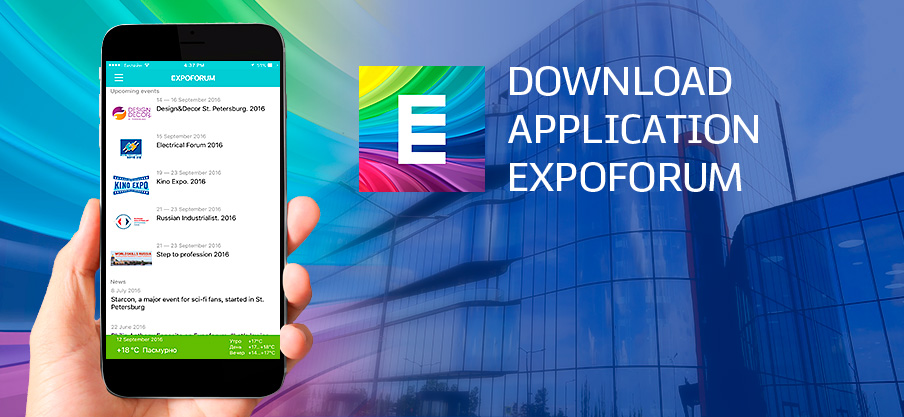Sustainable Cities – New Quality of Life
On November 6, the online conference “Sustainable Architecture. Green Construction” took place in the framework of the 20th International Forum Ecology of Big City (March 23–25, 2021).
It was dedicated to discussion of managerial and legislative decisions, the climate strategy, trends and practices in field of eco-sustainable development, green construction and certification, greenspace expansion and beautification in St. Petersburg and other Russian cities.
The conference was moderated by Sergey Tsytsin, CEO and Chief Architect of the Tsytsin Architectural Studio. The first section – “Problems of Sustainable Development of Cities” – was opened by Alexander Remizov, Chairman of Board of the Russian Sustainable Architecture and Building Council. Sustainable Cities and Communities, one of 17 Sustainable Development Goals, includes 8 areas: energy generation and management; collection and use of water; waste management; food delivery; urban culture and public spaces; architecture, engineering and landscape management; sustainable construction materials; transport and mobility management. The role of the state is to create development programs, regulate planning parameters and support market mechanisms. At the moment programs for modernization of existing buildings are created based on parameters of sustainable architecture, construction of buildings with low or zero energy consumption, and taking indexation of cities with a low level of carbon emissions into account. It is planned to expand such programs as Smart City and Comfortable Environment. To regulate planning parameters it’s critical to proceed from standardized design to parametric design with integration of the object into land use planning. Also, the state introduces systems of “green” certification and enables sustainable projects. High priority measures include reducing mortgage interest or putting dates on construction, driving requirements for bidding and goods of enterprises that manufacture eco-products, and moving from assessment of a square meter of the building to assessment of its living cycle.
In her presentation “Beautified and Green Areas in the City as a Compromise between Branches of Power and Citizens” Nadezhda Tikhonova, a Member of the St. Petersburg Legislative Assembly, Chairperson of the Specialized Commission for Environmental Protection of St. Petersburg Population, told about creation of new beautified areas and maintenance of already existing green areas. The speaker noted proactivity of citizens as exemplified with the contest of young architects “Our Favorite Garden Square” in the Kalininsky District and the beautification project along the Baltiysky Avenue in the Krasnoselsky District. She also announced possible amendments to the ‘main’ Law on Green Planting in Saint Petersburg.
Ilya Zalivukhin, CEO of Jauzaproject, Deputy Chairman of the Commission for Architecture in the Public Chamber of the Moscow Region, told about Anatomy of the City, a methodology where the residents are soul/energy; engineering systems are internal organs; the transport is the structure/skeleton; city management is the nervous system, and architecture is muscles. Such an approach provides consistent and sustainable development of cities.
The discussion was also attended by Vyacheslav Ukhov, Vice President of St. Petersburg Union of Architects; Vladimir Linov, Distinguished Architect of Russia, Professor of the International Academy of Architecture, Associate Professor at the Faculty of Architecture in the St. Petersburg State University of Architecture and Civil Engineering; Artyom Pavlovsky, Head of the Department of the SPI State Research and Design Center of Saint Petersburg Master Plan; Igor Kokorev, Head of the Marketing Department of Knight Frank, and Alexander Avdeev, Manager of Architect Relations Department of the KNAUF North-West Sales Directorate.
The second part of the conference,“The Role of Greenspace Expansion for Sustainable Development of Cities. New Challenges” was opened by Anna Katkhanova, Advisor to the Chair of the Committee for Urban Planning and Architecture. Using Hammarby Sjostad (a district of Stockholm) the speaker reasoned the role of water and green framework in the city. Smart technologies (“Blue-Green Infrastructure”) create the kind of residential houses with special properties and expand the influence area of the urban eco-system.
In his presentation “Multilayeredness of the Green Framework – a Key Element of Well-Balanced Urban Spatial Structure” speaker Alexander Vodyanik, Advisor to the Head of Krasnodar Administration for Blue-Green Infrastructure, a member of the Expert Council for Establishment of the Comfortable Environment Program under the Ministry of Construction of the Russian Federation, set the basic goals of urban greenspace expansion: to increase efficiency of land use in cities and to develop the urban community. The technical process of urban greenspace expansion and the problem of uniting environmental and social processes in the framework of planning while simultaneously increasing social and environmental health were discussed, so as socio-anthropo-psychological matter.
The issue was considered with participation of Viktor Korotych, Chief Architect of projects of the MLA+ Architectural Bureau in St. Petersburg; Alexander Karpov, CEO of ECOM; Oleg Pachenkov, Project Manager of the UP EUSP Center of Humanitarian Urbanism, and Maria Tinika, Coordinator of the Derevya Peterburga (“Trees of St. Petersburg”) Public Movement, and others.
Addressing the final topic, “Modern Experience of Implemented Objects” Pavel Murzakaev, Head of Project Company Relations Department in Schneider Electric, delivered the report “Digital Technologies for Green Building Management”; Anna Popyvanova, expert of the Vitality Leaf system of the Ecological Union, told about environmental certification of construction and finishing materials; Alla Potashinskaya, administrator of LEED projects in the Tsytsin Architectural Studio, shared her experience of reconstruction of the Spassky, 11 Business Center with certification for LEED GOLD. Also, Viktor Volkov, a Master Degree student of the St. Petersburg State University of Architecture and Civil Engineering in the area of Urban Development, and Filipp Nikandrov, Chief Architect of Gorproject, also spoke at the conference.
The online conference took place with the assistance of the Committee for Urban Planning and Architecture of St. Petersburg and the Sustainable Architecture Council under the St. Petersburg Union of Architects. The event was organized by Architectural Seasons Promotional and Informational Agency and EF-International with Gazprombank (Joint Stock Company) as a sponsor. A record of the event is available on the portal Sobytiye Online.

 Calendar
Calendar
 Online application
Online application
 Map
Map
 How to get
How to get


